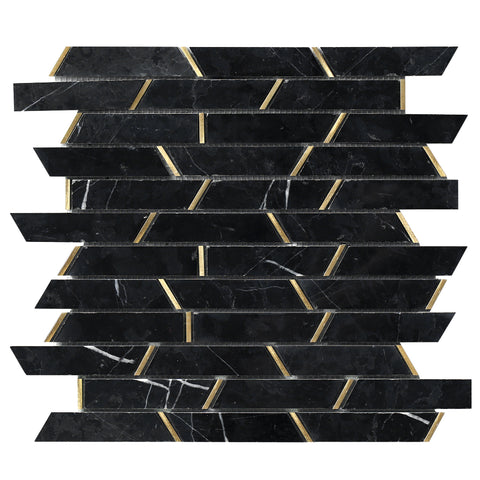Brief History of Mosaic Tiles
Mosaic tiles have a long and illustrious history, dating back to the second half of the 3rd millennium BC in Ancient Mesopotamia. During this period, mosaic tiles were made from various materials such as ivory, stones and shells, many of which were found in the local area, but Mesopotamia is not the only example of mosaic use. The Maya Mesoamerican civilization used mosaics as an independent art form as far back as 1500 BCE. However, it wasn't until the Sassanid Empire and Roman influences that we began to see mosaic tile patterns emerging.
In most cases, the most popular subject matter seen was beautiful and intricate mythological scenes. Gods such as Apollo and Neptune are regularly found in detailed mosaics from this time period, often surrounded by animals and muses. Inspiration was also found in everyday life, with many mosaics depicting scenes of humans hunting alongside dogs, fishing, engaging in arts and crafts and carrying out agricultural tasks. Nature is the other key subject matter, with many mosaics illustrating the characteristics of the four seasons and the seas. Often the seasons will be shown as people who represent the colours, mood and changes throughout the year.
Mosaics can be seen throughout history, documenting cultures, lives and events from thousands of years ago as well as being used for decorative purposes. In the modern-day, however, mosaic tiles are primarily used for interior design, but the allure of the intricate, eye-catching designs and colours has remained very much alive.
How are Mosaic Tiles Made?
Mosaic tiles can come in a wide range of materials such as glass, porcelain, stone and more, but the way they are created is generally the same. Traditionally, mosaic tiles are cut into small square cubes to be used as part of a larger mosaic tile pattern; however, modern mosaics come in a wide range of shapes. To create more contemporary designs, mosaic tiles are now cut into brick shapes, chevrons, pebbles, rectangles and many more.




From left to right; Allana Mosaic, Stone Etch Mosaic, Monte Carlo Black Mosaic and Hexia Blush Mosaic.
This interesting tile type can come in a range of sizes which means cutting them to size will require the correct tools. Mosaics tiles should be cut using a diamond tipped wet saw blade to avoid chipping whilst cutting. In some cases, CNC laser cutting will be used to create the most precise, accurate shape, especially when it is a more complicated and larger job.
Mosaic tiles are very much alive in the 21st century, being used in kitchen backsplashes, bathrooms, gardens, and more. These tiles are not only a beautiful and creative addition to the home, but they are also functional ones. It is not difficult to see why they have remained a popular choice for modern-day homeowners with the ever-growing design options.
Feel free to explore our range of mosaics here at House of Mosaics. We've categorised our mosaics under the 'Shop' section above, so you can shop by material, shape, style, colour and much more!




